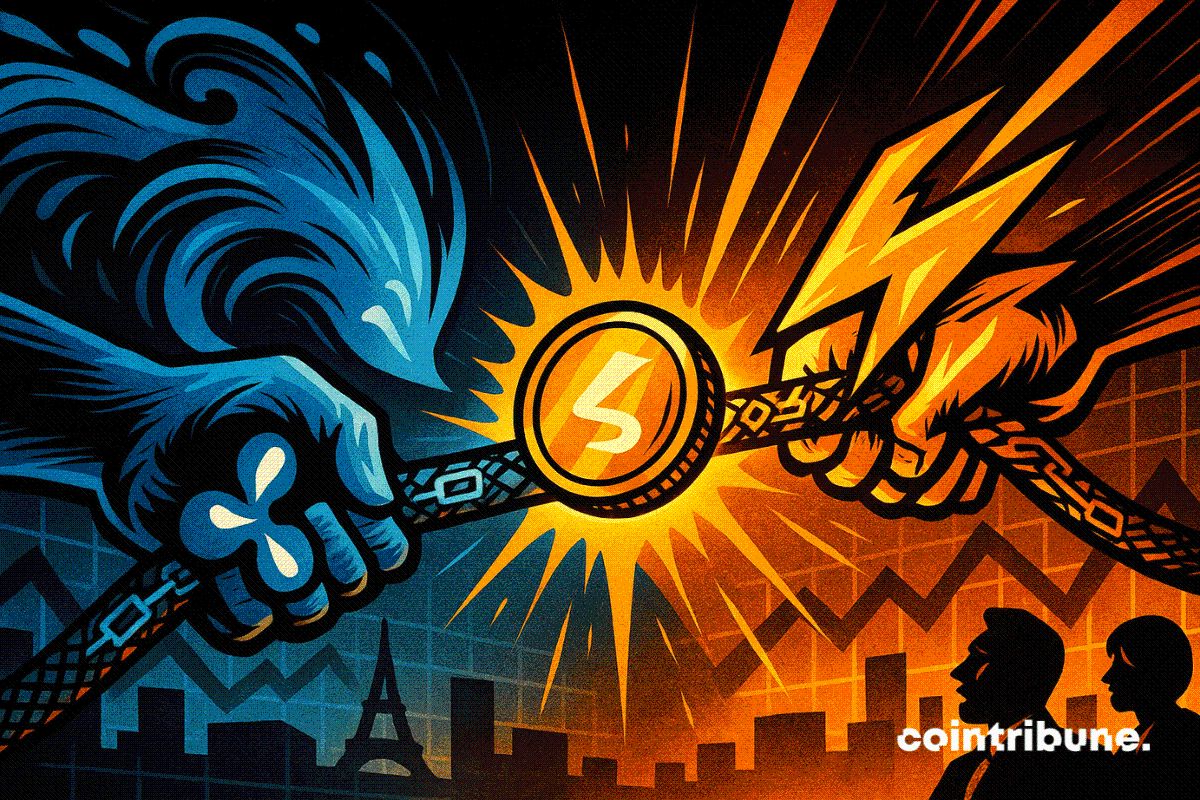SWIFT Connects Conventional Finance and Blockchain with 2025 Enhancement
- SWIFT launches blockchain integration in November 2025, enabling DLT-based tokenized asset settlements via DLIs/DTIs. - The upgrade supports legacy MT and ISO 20022 standards while partnering with XRP Ledger, Hedera, and Linea for cross-chain interoperability. - Pilots with BNP Paribas and BNY Mellon test stablecoin settlements, leveraging zk-rollups for secure, low-cost transactions. - The initiative bridges traditional finance with DLT systems, accelerating tokenized securities adoption and CBDC integr
The Society for Worldwide Interbank Financial Telecommunication (SWIFT) has announced a new initiative to integrate blockchain technology, which is scheduled to be implemented in November 2025. This marks a significant evolution in the global financial system SWIFT Goes On-Chain: Breaking Down the 2025 [ 1 ]. With this enhancement, SWIFT’s messaging platform will be able to accommodate blockchain-based payment functionalities, such as digital ledger identifiers (DLIs) and digital token identifiers (DTIs), enabling financial institutions to settle tokenized assets directly on distributed ledger technology (DLT) platforms SWIFT Goes On-Chain: Breaking Down the 2025 [ 1 ]. The update will apply to both the traditional MT messages and the modern MX (ISO 20022) format, maintaining compatibility with older systems while embedding blockchain features into essential processes SWIFT Goes On-Chain: Breaking Down the 2025 [ 1 ].
This integration is part of SWIFT’s larger plan to connect conventional finance with decentralized networks, utilizing utility blockchains like the
SWIFT is also working with Ethereum’s Layer 2 network,
The November 2025 deployment will move these innovations from experimental pilots to full-scale use by financial institutions. Notable advancements include linking blockchain wallet addresses to payment instructions, incorporating smart contract oracles for adaptive fee management, and enabling settlement of tokenized assets across both banking and blockchain environments SWIFT Chainlink Integration Set for November 2025: From Pilot to Live Deployment [ 3 ]. This transformation will facilitate the tokenization of real-world assets (RWAs), such as digital stocks and bonds, by offering a secure and interoperable framework for global financial players SWIFT Chainlink Integration Set for November 2025: From Pilot to Live Deployment [ 3 ].
SWIFT’s move to adopt blockchain is part of a wider trend towards programmable finance and digital public infrastructure (DPI). Central banks and financial organizations are increasingly investigating CBDCs and tokenized securities, with SWIFT’s enhancements making direct connections between legacy and DLT systems possible SWIFT Goes On-Chain: Breaking Down the 2025 [ 1 ]. Examples like India’s Unified Payments Interface (UPI) and Australia’s collaborative payment platforms illustrate how DPI is transforming global capital movement SWIFT Goes On-Chain: Breaking Down the 2025 [ 1 ].
Industry analysts believe that the November 2025 changes will speed up the mainstream adoption of tokenized financial products, especially as companies like BlackRock begin to tokenize parts of their $21.6 trillion in assets SWIFT Goes On-Chain: Breaking Down the 2025 [ 1 ]. Platforms that can manage on-chain asset ownership and provide transparent audit trails are expected to lead the next era of digital finance, with SWIFT’s standards helping to unify the market and support large-scale growth SWIFT Goes On-Chain: Breaking Down the 2025 [ 1 ].
Disclaimer: The content of this article solely reflects the author's opinion and does not represent the platform in any capacity. This article is not intended to serve as a reference for making investment decisions.
You may also like
Bitcoin Updates: Harvard’s Investment in Bitcoin Challenges Previous Doubts as Major Institutions Turn to Cryptocurrency
- Harvard University increased its stake in BlackRock’s IBIT to $442.8 million, now its largest U.S. holding, reflecting growing institutional crypto adoption. - The move marks a strategic shift toward Bitcoin and gold as inflation hedges, despite past skepticism from Harvard economists like Kenneth Rogoff. - Other institutions, including Abu Dhabi’s Al Warda and Emory University, also boosted Bitcoin ETF holdings, aligning with $60.8B in net inflows since 2024. - Analysts view Harvard’s 0.6% allocation as

Ethereum News Update: Optimism Surrounding Ethereum’s Supercycle Faces $1.4B ETF Outflows and Skepticism from Competitors
- Ethereum (ETH) fell below $3,100 on Nov 16, 2025, amid institutional selling and macroeconomic uncertainty, with ETF outflows reaching $1.42 billion since early November. - Fundstrat's Tom Lee argued ETH could enter a Bitcoin-like "supercycle," but critics questioned its defensibility against rivals and unique utility compared to other chains. - Harvard's $443M allocation to BlackRock's IBIT ETF highlighted growing institutional crypto interest, contrasting with Bitcoin ETFs' $1.6B three-day outflows. -

Tokenized Gold Market Climbs to $3.9B While Stablecoin Supply Surges

Solana and XRP Battle for the Next Major Spot in the Crypto Market Shake-Up
